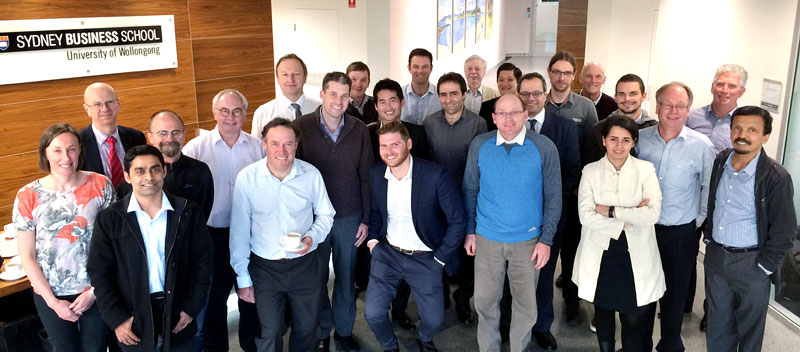Long gone are the barriers separating New Zealand and Australia from doing business together – and nothing showcases this more than our recent attendance at the Australian Steel Research Hub workshop where we were invited to share our expertise with industry leaders across Australasia.
Not only was this a fantastic networking opportunity to identify experts within different fields, but it also opens the door to future collaboration with Australian researchers and industry for our members in New Zealand.
But who is the Australian Steel Research Hub?
A centrepiece for collaborative steel research in Australia, they strive to deliver breakthrough product and process innovations to enable their industry to compete on a global stage, attracting funding of $12M over the past 5 years, including significant investment from the Australian Research Council and BlueScope.
Led by the University of Wollongong, it brings together key partner BlueScope, with Arrium, Bisalloy, Cox Architects, Australian Steel Institute (ASI), Lysaght, RMIT and various universities from Queensland, NSW, Newcastle and Swinburne to drive its research programme.
Not surprisingly, their workshop was an opportune time for us to drive a New Zealand perspective home on key areas of discussion around cold formed steel to:
- Coordinate, align and grow critical mass expertise to support industry,
- Generate awareness of available research capability and capacity in Australasia,
- Improve awareness of research occurring and maximise its impact,
- Increase understanding of industry needs for the development of cold formed steel structures and where it’s needed, and
- Explore what the Steel Research Hub, ASI and NASH can do to progress all of this.
Perhaps our greatest success at this workshop was the chance for our General Manager Structural Systems Dr. Stephen Hicks to present a number of our research programmes – a platform to truly share the advances our industry is making in this space within New Zealand.
He was able to highlight works done in fire research in the ongoing BRANZ levy-funded ‘Specific Design for Multi-Story Light Steel Framed Buildings’ project, NASH-funded shaking table tests which clearly demonstrated light steel framing with brick veneer performed exceptionally when subjected to seismic loads and thermal performance of light steel framing before touching on his previous research activities in Europe on floor vibrations and the acoustic performance of steel frame buildings.
For us, this was a positive step forward, with particular interest expressed around the BRANZ project we’re currently leading, and the need for greater urban intensification on both sides of the Tasman – something we feel will certainly lead to business prospects for steel in the residential sector going forward.

